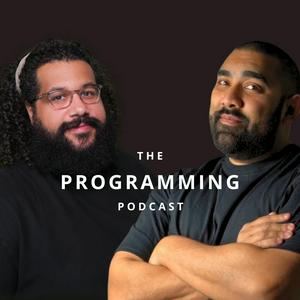You did everything you were “supposed” to do. You climbed from junior to senior to staff to principal. You have the title, the salary, the prestige, and a calendar full of meetings. And somehow, you feel empty. You are highly paid, deeply experienced, and still sitting at your keyboard wondering, “What should my fingers actually be doing right now?”Stay in Touch:📧 Have ideas or questions for the show? Or are you a business that wants to talk business?Email us at
[email protected]!Danny Thompsonhttps://x.com/DThompsonDevhttps://www.linkedin.com/in/DThompsonDevwww.DThompsonDev.comLeon Noelhttps://x.com/leonnoelhttps://www.linkedin.com/in/leonnoel/https://100devs.org/📧 Have ideas or questions for the show? Or are you a business that wants to talk business?Email us at
[email protected]!In this episode, Danny and Leon dig into what happens when the dream job stops feeling like a dream. They talk about the loss of that early-career magic, the tension between strategy and hands-on building, and why so many principal and staff engineers quietly feel stuck, bored, or like frauds. You will hear how to think about the value of your time, how to shift from “hero developer” to multiplier, and how to build systems, cultures, and people instead of just features.They also tackle the difference between impostor syndrome and an apathy crisis, how to keep your skills sharp without clinging to every ticket, and how to design a team culture where learning and ownership are normal. In the Ask Danny and Leon segment, they close with a deep dive on job search frustration, referrals that still end in rejection, why your resume and presence are probably working against you, and how to use volume, networking, and better communication to actually see results.Perfect for principal, staff, and senior engineers who feel like they have made it and yet feel miserable, and for earlier career devs who want to avoid ending up in the same place.Chapters00:00 – The principal engineer who feels lost02:15 – Remembering the first time code felt like magic07:25 – The three types of senior engineers10:30 – What your time really costs at the principal level16:10 – Trading magic for meetings and how to get it back19:00 – Scaling yourself through docs, videos, and systems20:45 – Building a culture of experiments and continuous learning22:30 – Aligning the team on mission, not just tickets23:30 – This isn’t impostor syndrome, it’s an apathy crisis24:30 – Becoming a multiplier instead of the hero developer29:40 – Turning your engineers into teachers and leaders32:50 – The five levels of decision autonomy35:30 – Nobody actually knows everything (and that’s okay)35:55 – Ask Danny & Leon: “I have zero prospects, when will I see results?”40:20 – Referrals, rejections, and why volume still wins44:50 – Your resume doesn’t read like a human story49:50 – Visibility, effort, and the gas station promotion story53:40 – Technical skill is not your whole career56:00 – Coffee chats, calendars, and how activity predicts outcomes59:00 – Effort over luck and closing thoughts


